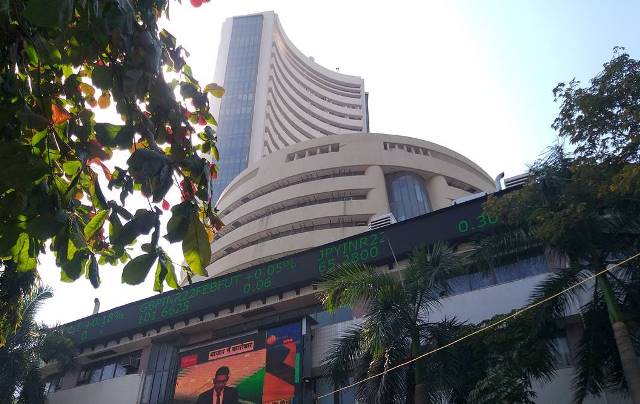By Gyanendra Kumar Keshri
Corporate earnings and the central bank’s action amid a slide in the value of the rupee are likely to keep the Indian equities markets’ key indices – Sensex and Nifty – volatile in the coming weeks ahead of the Diwali festival.
The country’s largest IT firm Tata Consultancy Services (TCS) is scheduled to kickstart the Q2 earnings season on October 10.
According to TCS earnings release, “Tata Consultancy Services Limited will announce its results for the Second Quarter of FY 2023, ended September 30, on Monday, October 10, 2022, after-market trading hours.”
It will be followed by the announcement of the quarterly results by other IT giants like Infosys, HCL Technologies, Wipro, and Tech Mahindra. HCL Technologies and Wipro are scheduled to announce Q2 results on October 12 followed by Infosys on October 13.
Markets will closely watch the profit margins and earnings forecasts by the IT giants, especially in view of the challenges being faced due to the US Federal Reserve action.
“High-frequency indicators point towards improvement in activity and the early trends of festive demand appears strong. As we enter the Q2FY23 earnings season, the focus would be on corporate commentary on demand and margins,” said Shibani Sircar Kurian, Senior EVP & Head- Equity Research, Kotak Mahindra Asset Management Company.
Going ahead, there are multiple global macro factors at play and higher interest rates and inflation are likely to be sticky in the developed world. Indian growth outlook appears stable and a relative outlier. However, given the outperformance of the Indian markets and with relative valuations appearing stretched, it is possible that markets see some volatility in the near term. In the medium term, the outlook for equity markets remains healthy, given the strength of domestic macro growth and corporate earnings trajectory, Kurian said.
During the week that ended Friday, the markets witnessed volatility. It started the week on a negative note but a rally in the middle of the week helped the key indices register decent gains.
The 30 stock S&P BSE Sensex ended the week at 58,191.29 points, registering a gain of 764.37 points or 1.33 percent during the week.
The broader Nifty 50 of the National Stock Exchange gained 220.3 points or 1.28 percent during the week. It closed at 17,314.65 points on Friday, the last trading day of the week.
On the last trading day of the week, the key indices witnessed selling pressure but turned flat towards the end of the day. However, the indices closed with marginal loss.
On Friday, Sensex closed 30.81 points or 0.05 percent lower, while Nifty ended the day with a loss of 17.15 points or 0.1 percent.
Besides corporate earnings, global developments will have a significant impact on the markets. In the past couple of weeks, the equities markets have been volatile mainly due to global developments.
The main factors to watch for are the likelihood of further aggressive tightening by the US Federal Reserve and the other central banks and the continuing depreciation of emerging market currencies, the potential for an economic slowdown in the global economy, according to Joseph Thomas, Head of Research, Emkay Wealth Management.
The Indian rupee has also been under pressure in line with the currencies of the other emerging markets. The rupee touched a fresh record low of 82.42 during the week. On October 7, the Indian rupee closed at 82.32 against the US dollar, which is 98 paise lower when compared with its September 30 closing of 81.34 against the US dollar.
The Reserve Bank of India (RBI) seems to be burning its kitty to defend the currency. Due to the RBI action, the performance of the rupee has been much better than the currency of the other emerging markets.
However, the RBI’s action has taken a toll on the country’s foreign reserves. India’s foreign exchange (forex) reserves slumped by $4.854 billion to $532.664 billion for the week ended September 30, the lowest level since July 2020.
This is the lowest level of India’s forex reserves since the week ended July 24, 2020. The forex reserves had slumped by $8.134 billion during the previous reporting week.
As per the Reserve Bank of India’s weekly statistical supplement, foreign currency assets, which are the biggest component of the forex reserves, dipped by $4.406 billion to $472.807 billion during the week ended September 30.
“Indian equity markets remained volatile during the week. Despite the volatility, India continues to outperform MSCI emerging market and MSCI world indices. Growth in India has been resilient even as developed economies grapple with slowing growth and higher inflation,” said Kurian.
The US Federal Reserve remained hawkish and raised key policy rates 75 basis points or 0.75 percent recently. The monetary policy tightening stance of the US Fed resulted in a decline in the equities markets globally. It has also put pressure on emerging markets’ currencies.
In India, RBI hiked the policy repo rate by 50 basis points to 5.90 percent, largely in line with consensus expectations, continuing to frontload tightening to counter inflation risks.
Going ahead it is likely that RBI’s rate decision would be guided by domestic considerations whereby average CPI inflation is expected to moderate in FY24. Higher than-expected tightening by the US Fed and geopolitical uncertainties remain the key risks, Kurian remarked. (ANI)
Read More:http://13.232.95.176/


